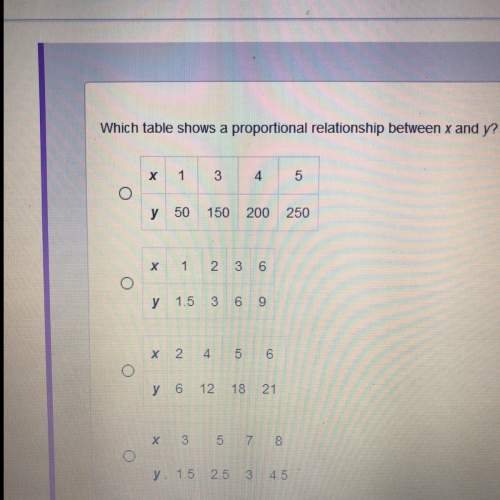
Mathematics, 15.11.2020 04:10 kelciiann5968
If ABCD was a kite, and P was the intersection of its diagonals, what must be true? (3 points)
There are two pairs of opposite congruent angles.
The diagonals each bisect the other diagonal.
The adjacent sides are equal.
The opposite sides are equal.

Answers: 2


Another question on Mathematics

Mathematics, 21.06.2019 15:30
Come up with a new linear function that has a slope that falls in the range 10 m − < < . choose two different initial values. for this new linear function, what happens to the function’s values after many iterations? are the function’s values getting close to a particular number in each case?
Answers: 1

Mathematics, 21.06.2019 18:30
Is the square root of 4 plus the square root of 16 rational?
Answers: 2

Mathematics, 21.06.2019 21:30
Consider the following equation. 1/2x^3+x-7=-3sqrtx-1 approximate the solution to the equation using three iterations of successive approximation. use the graph below as a starting point. a. b. c. d.
Answers: 3

Mathematics, 21.06.2019 21:40
Drag the tiles to the correct boxes to complete the pairs. label each function. as even , odd, or neither.
Answers: 1
You know the right answer?
If ABCD was a kite, and P was the intersection of its diagonals, what must be true? (3 points)
Ther...
Questions




Mathematics, 23.11.2019 03:31

Mathematics, 23.11.2019 03:31





Mathematics, 23.11.2019 03:31



Mathematics, 23.11.2019 03:31


Mathematics, 23.11.2019 03:31

History, 23.11.2019 03:31







